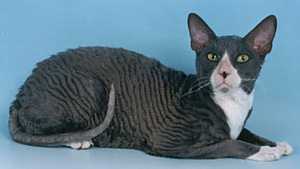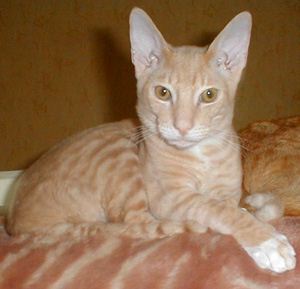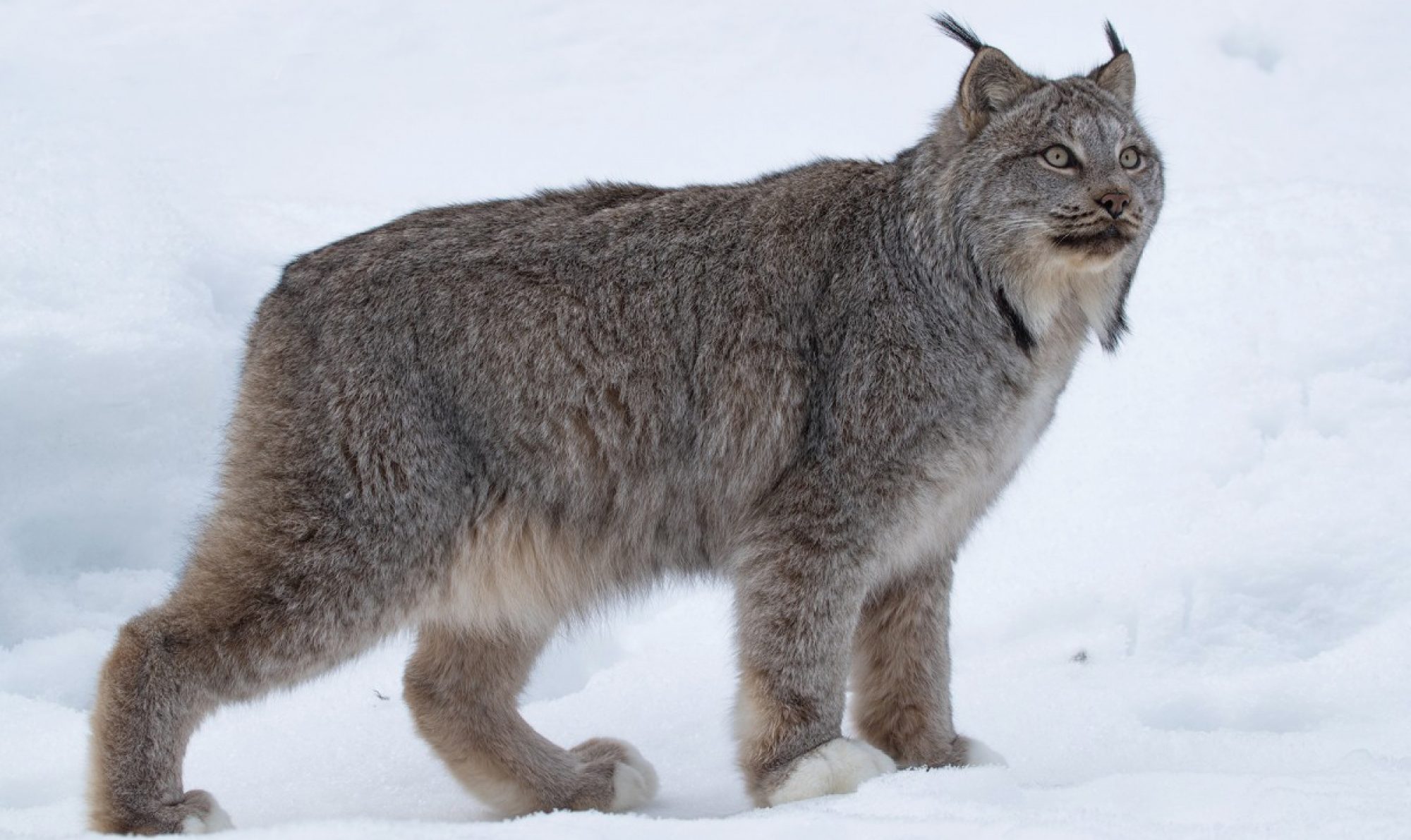The Cornish Rex has no hair except for a fine down. Most breeds of cat have three different types of hair in their coats: the outer fur or “guard hairs”, which is about 5 cm long in shorthairs and 10cm+ long in longhairs; a middle layer called the “awn hair”; and the ‘down hair’ or undercoat, which is very fine and about 1 cm long. Cornish Rexes only have this undercoat and thus only lose a few of these very fine hairs at a time. They don’t shed like many other cat breeds.

The coat of a Cornish Rex is extremely fine and is the softest fur of any cat breed. However, their light coat means that they are best suited for indoor living in warm and dry conditions. Consequently, these cats tend to hang around the warmest places they can find in the house (you know … the tops of computer monitors, under strong lamps and on top of radiators..that kind of thing). Some Cornish Rexes also have a mild cheesy smell peculiar to the breed; this odour comes from scent glands in the paws (cheese on toast anyone:))
Often the breed referred to as the Greyhound of the cats, because of the sleek appearance and the galloping run characteristic of the breed. Some Cornish rexes like to play fetch, race other pets, or do acrobatic jumps. The Cornish Rex is an adventurous cat and is very intelligent. It can readily adapt to new situations and will explore wherever it can go, jumping into refrigerators, examining washing machines, etc. Some humans consider its antics to be deliberately mischievous. The Rex is extremely curious, seeks out the company of people and is friendly towards other companion animals. It is a suitable pet for timid children.
Origin
The Cornish Rex is a genetic mutation that originated from a litter of kittens born in the 1950s on a farm in Cornwall, UK; hence the first part of the breed’s name. One of the kittens, a cream-colored male named Kallibunker, had an extremely unusual, fine and curly coat; he was the first Cornish Rex. The owner then bred Kallibunker back to his mother to produce 2 other curly-coated kittens. The male, Poldhu, sired a stunning female called Lamorna Cover who was later brought to America and crossed with a Siamese, giving the breed their long whippy tails and big ears.

The Devon Rex looks similar in appearance to the Cornish Rex, but has guard hairs and sheds. The Devon Rex mutation is different than the Cornish Rex mutation in that the Devon has shortened guard hairs, while the Cornish Rex lacks guard hairs altogether. Crosses between Devon and Cornish Rexes are not permitted in pedigrees and matings between them will not produce a cat with short wavy fur. Another hair-deficient breed is the Sphynx cat, which has no hair but may have a very light coat of fuzz.
Despite some belief to the contrary, the Cornish Rex’s short hair does not make it non- or hypo-allergenic. Most people who have cat allergies are allergic to cat dander and cat saliva. Since Cornish Rex cats groom as much as or even more than ordinary cats, a Cornish Rex cat will still produce a reaction in people who are allergic to cats. However, because of the fine, light fur that is shed from these cats, people with only mild allergies may experience fewer or no symptoms with a Rex.
Using the word “Rex” to imply curly or otherwise unusual fur originates from an occasion when King Albert I of Belgium (1875-1934) entered some curly-haired rabbits in a rabbit show. They did not meet the breed standard, but the show’s officials did not wish to risk offending the king by rejecting them. Instead, they accepted them but wrote “Rex” (Latin for “king”) beside their names.

